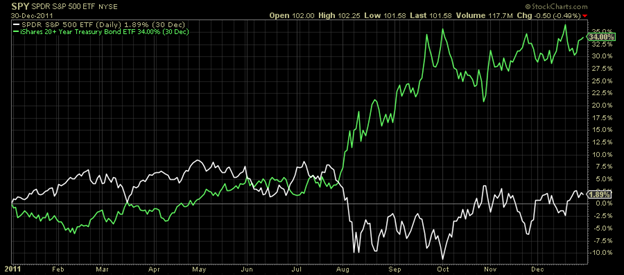Precious Metals
The Debt Ceiling Deadline Is Approaching. What Does That Mean for Investors?
Congress is playing a dangerous game with a political football, but it’s one that could have serious ramifications for the financial markets. Of course,…

Congress is playing a dangerous game with a political football, but it’s one that could have serious ramifications for the financial markets. Of course, I’m talking about the debt ceiling standoff. If Treasury Secretary Janet Yellen’s warning comes true, the government will run out of cash on or around June 1, at which point the U.S. government would officially default on its debt.
We’ve been down this road before. The closest comparison to what we’re seeing right now is 2011 where (let me know if this sounds familiar) a Democratic president and a Republican-controlled House hit a stalemate because Republicans wanted to tie spending cuts to a debt limit increase. Both sides are dug in hard right, but they both know that can’t happen.
Some type of agreement will almost certainly be reached, which would avoid some of the worst-case outcomes. But that doesn’t mean investors will be spared.
What the Debt Ceiling Debate Means for Investors
If we use 2011 as a guideline, investors remained mostly calm until about a week or two before the deadline. The S&P 500 and long-term Treasuries both moved in a relatively sideways pattern before the flight-to-safety trade took place.
 Source: Chart courtesy of StockCharts.com TradingView: Charts by TradingView
Source: Chart courtesy of StockCharts.com TradingView: Charts by TradingView
It was at that point that investors started to prepare for the worst. Despite the possibility of default and a credit downgrade from the ratings agencies, investors still flocked to Treasuries for safety. They did so at the exact time that they began selling stocks. The one important thing to note in this chart is that stocks and bonds didn’t automatically snap back to where they were pre-deadline even though a default had been averted. The risk-off environment remained for several months afterwards. The S&P 500 mostly drifted sideways for the remainder of 2011, while Treasuries continued to steadily rally higher.
That’s a sample size of one though and it’s impossible to say if the same pattern will play out this time around. Intuitively, it makes sense. There’s a general feeling of complacency in the markets where investors seem to acknowledge that the debt ceiling deadline is approaching, but don’t seem to think that it’s a real threat. Perhaps if this game of chicken goes down to the wire again, investors will finally run for the exits, but history suggests that investors might not reposition their portfolios until they’re almost forced to do so.
Some signals in this market, however, are demonstrating concern. Gold prices are challenging all-time highs, which means some investors are already pushing into non-dollar safe havens.
Part of the reason is likely the debt ceiling, but part of it is just the general macroeconomic backdrop. Lumber prices look particularly terrible, which are all the way back to Covid-19 recession levels. Remember that big housing boom that took place in the pandemic’s immediate aftermath? The lumber market is saying that supply/demand has gone full circle back to its starting point. If lumber is a “tell” on housing and housing is a “tell” on the economy, what does it say when lumber is hitting multi-year lows at the exact same time gold is hitting all-time highs?
The Bottom Line
The sooner the government acts to resolve this crisis, the better off investors will be. They may have a small window to act before a strong risk-off sentiment establishes itself. Even if that happens, that state of economic optimism — as evidenced by the lumber/gold ratio — suggests that investors may still be unable to avoid the adverse conditions that have already been building.
On the date of publication, Michael Gayed did not hold (either directly or indirectly) any positions in the securities mentioned in this article. The opinions expressed in this article are those of the writer, subject to the InvestorPlace.com Publishing Guidelines.
Michael A. Gayed is the Publisher of The Lead-Lag Report, and Portfolio Manager at Tidal Financial Group, an investment management company specializing in ETF-focused research, investment strategies and services designed for financial advisors, RIAs, family offices and investment managers.
InvestorPlace readers that are new subscribers to the The Lead-Lag Report can receive a 30% discount by entering the promo code “InvestorPlace30” with your order.
More From InvestorPlace
- Buy This $5 Stock BEFORE This Apple Project Goes Live
- The Best $1 Investment You Can Make Today
- Wall Street Titan: Here’s My #1 Stock for 2023
The post The Debt Ceiling Deadline Is Approaching. What Does That Mean for Investors? appeared first on InvestorPlace.

Canadian Silver Co. Will See Big Changes in 2024
Source: Michael Ballanger 12/22/2023
Michael Ballanger of GGM Advisory Inc. takes a look at the current state of the market and shares on stock…
EGR options out Urban Berry project in Quebec to Harvest Gold – Richard Mills
2023.12.23
EGR Exploration Ltd. (TSXV: EGR) has moved from owner to shareholder at its Urban Berry project in Quebec, this week announcing it is optioning…
Crypto, Crude, & Crap Stocks Rally As Yield Curve Steepens, Rate-Cut Hopes Soar
Crypto, Crude, & Crap Stocks Rally As Yield Curve Steepens, Rate-Cut Hopes Soar
A weird week of macro data – strong jobless claims but…













